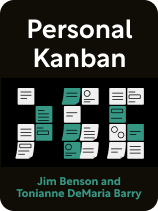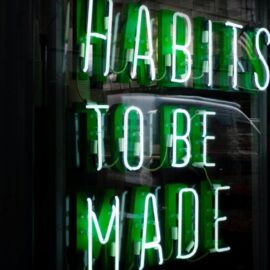

This article is an excerpt from the Shortform book guide to "Personal Kanban" by Jim Benson and Tonianne DeMaria Barry. Shortform has the world's best summaries and analyses of books you should be reading.
Like this article? Sign up for a free trial here.
How can you constantly improve yourself and your work habits? How is continuous improvement part of the kanban system?
In kanban, continuous improvement is at the core of the workflow system. The way you achieve it is by observing your work, asking questions, and trying out new ways of doing things. It’s important to take some time to step back and reflect on what you’ve accomplished so you can continue moving forward.
Let’s look at three ways to embed continuous self-improvement into your personal kanban practice.
1. Retrospectives
In organizational contexts, retrospectives are meetings where a team looks back on a project and reflects on what went well and what went wrong. They’re opportunities to celebrate, vent, and identify work habits or methods to keep or discard. In the context of personal kanban, you can have a retro with yourself by looking at what you did or didn’t accomplish and thinking about why.
According to the authors of Personal Kanban, continuous improvement can first be achieved by holding retrospectives regularly, such as every week, and not waiting until the next scheduled retro if you get derailed. It’s better to stop, conduct a retrospective, and start fresh. To remind yourself, you can add a “Retrospective” column to your kanban where you put completed tasks. Each week, before planning the week ahead, look at this column to reflect on your wins and losses and see what you can learn from them.
(Shortform note: Agile teams conduct retrospectives at the end of a work cycle to ensure they’re constantly giving and receiving feedback and finding ways to improve. Consider incorporating some agile techniques to ensure your retrospectives help you improve. For example, at the end of a work cycle, choose one new thing to try, one thing that’s not working and you’ll stop doing, and one thing that’s working well and you’ll continue doing. Then, make a note of the changes you’ll make to your work process and be specific. What will the change entail, and how will you know if it worked? Revisit the note at the end of the following work cycle to see if you’ve made progress.)
2. Observe Patterns
Visualizing your work and its flow allows you to identify the usual patterns it follows. The patterns you identify inform how you plan ahead, helping you make adjustments to make your work more efficient. Paying attention to patterns also helps you be alert to disruptions so you can deal with them early.
Here are some patterns the authors suggest you pay attention to:
- How much time and energy different kinds of tasks demand of you
- Which tasks you enjoy doing, and which feel like drudgery
- Which tasks you usually complete successfully and which waste away in your backlog
- Which kinds of tasks tend to get stuck in the Waiting Space
- How many tasks you can confidently plan to do in a typical day
(Shortform note: An additional pattern you can observe to become more efficient is where your attention is at different moments of the day. In Hyperfocus, Chris Bailey explains that, by focusing on a single task, you are better able to defend against distractions, you refocus your attention faster when your mind wanders, and you make better decisions about your task. In other words, you become less distractible, and you work more efficiently. He suggests setting an alarm on your phone to go off every hour. When it rings, note where your attention is at that moment. Specifically, Bailey recommends asking yourself questions like: What am I doing right now? Is this what I want to be working on?)
3. Metrics
Sometimes you need hard data to prove the patterns you’re observing. That’s where metrics come in. The authors suggest that you carefully choose metrics to measure and act on so that the act of measuring isn’t a waste of time. These are two metrics you can keep track of:
How tasks make you feel: When you complete a task that made you feel, for example, excited or upset, make a note of it. You can collect those completed tasks in a special section of your kanban and go through them during a retrospective. Look for patterns to identify the kinds of tasks you might want to steer clear of or tasks you want to prioritize.
How long tasks take: On the same card or sticky note where you write down a task, log the date you created it, the date you pulled it from your backlog to “Ready”, the date you pulled it to “Doing”, and the date you pulled it to “Done”. Doing this for several tasks will give you an average to measure your workflow, which will allow you to plan more accurately and find opportunities for improvement.
| Create a Metrics Tracker To dig even deeper into the patterns of your workflow and make the most of kanban’s pedagogical nature, consider adapting the “distraction tracker” Nir Eyal outlines in Indistractable. A distraction tracker raises your awareness of your distraction patterns, helping you better control your actions in the future, but you could adapt it to learn about your work patterns more generally. In a distraction tracker, you note the time of day, who you were with, where you were, your emotions, what you were doing when you felt distracted, and the distracting action you took. For example, you might note that at 2:15, you were home alone (where/who you were with), studying (activity), and feeling overwhelmed (emotions), so you reorganized your bookcase (distracting action). You can adapt a distraction tracker to complement your personal kanban. For example, each task might have space to write your emotions, and the challenges, distractions, bottlenecks, or procrastination you encountered. Or you might create a chart like the one above to see all of your metrics at a glance. |

———End of Preview———
Like what you just read? Read the rest of the world's best book summary and analysis of Jim Benson and Tonianne DeMaria Barry's "Personal Kanban" at Shortform.
Here's what you'll find in our full Personal Kanban summary:
- Why life is too complex to organize with a to-do list or productivity system
- What a personal kanban is and how it's used by automakers and engineers
- How a visual board helps you see your workflow and make future plans






